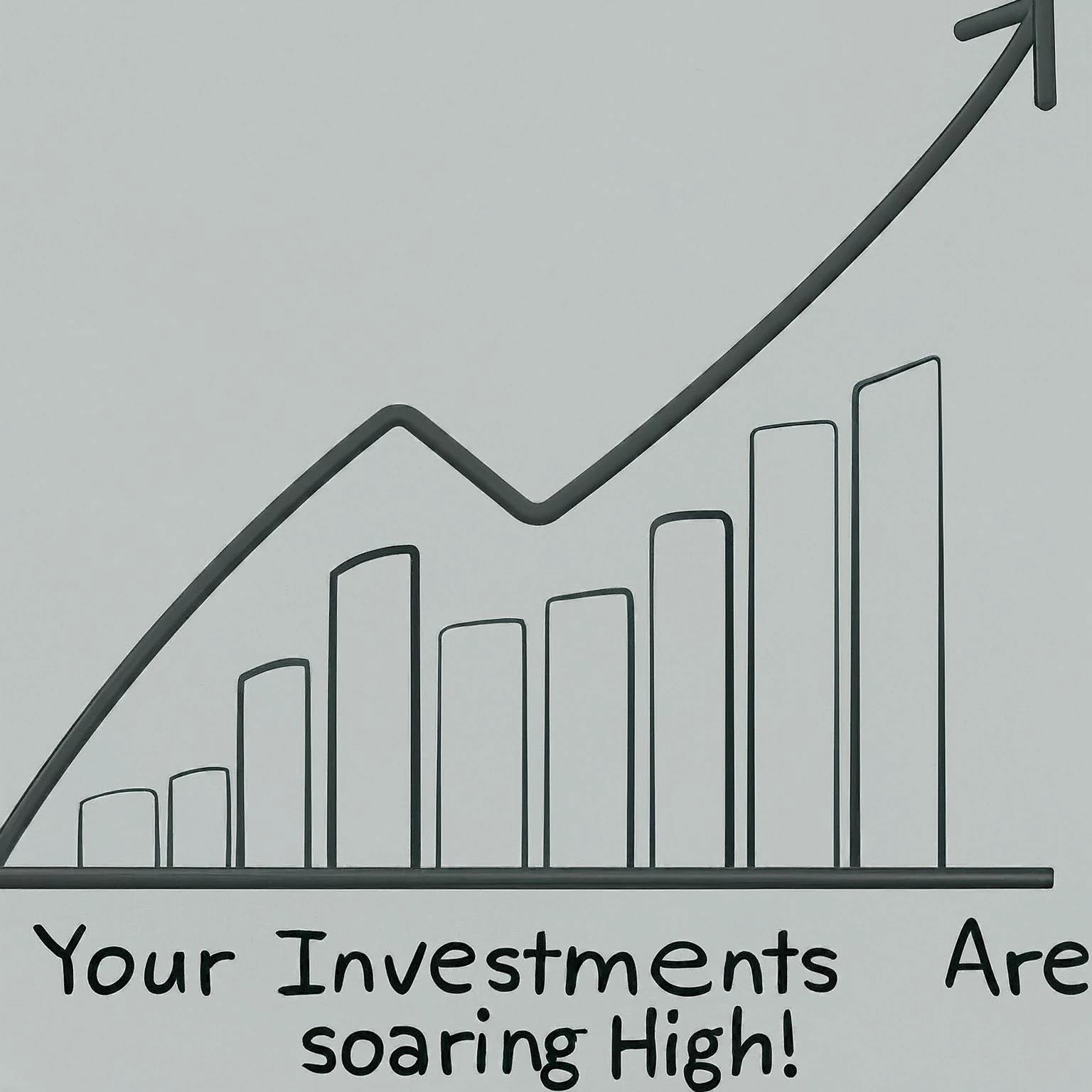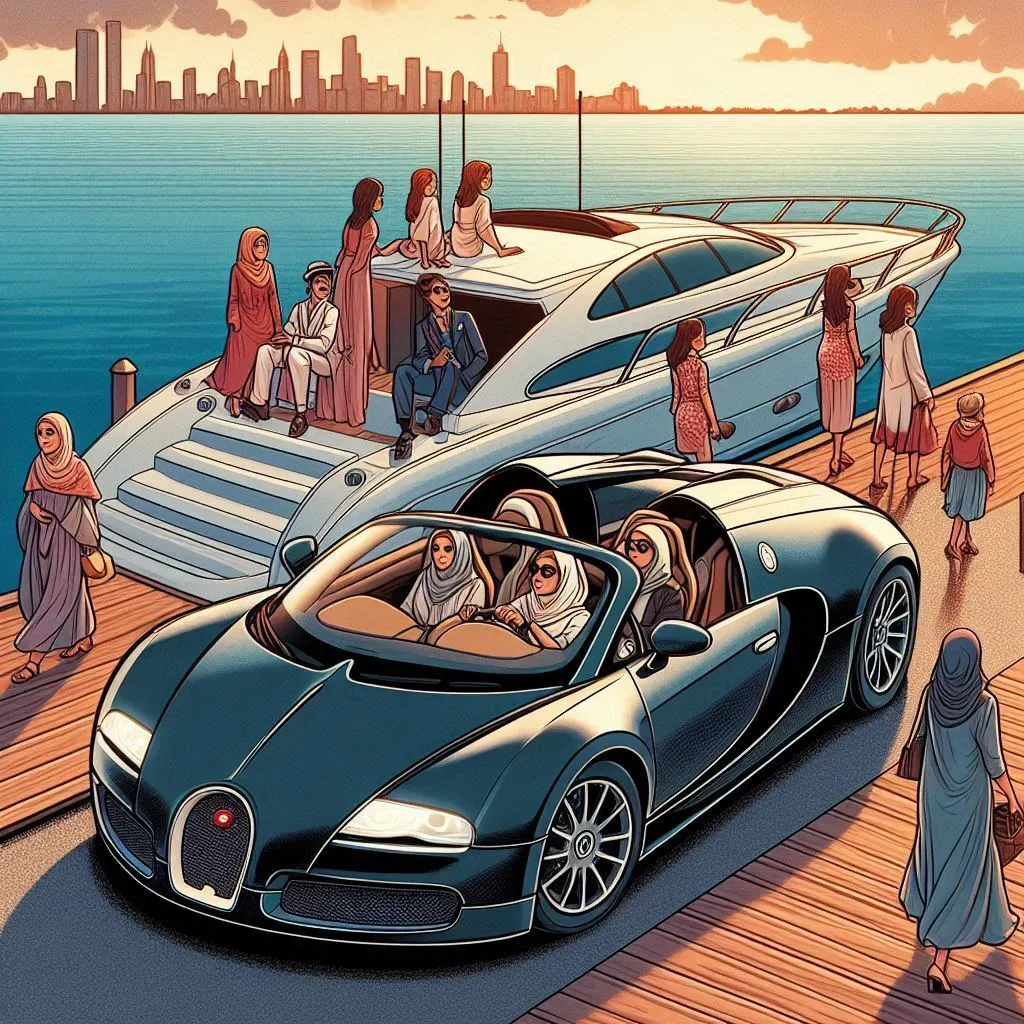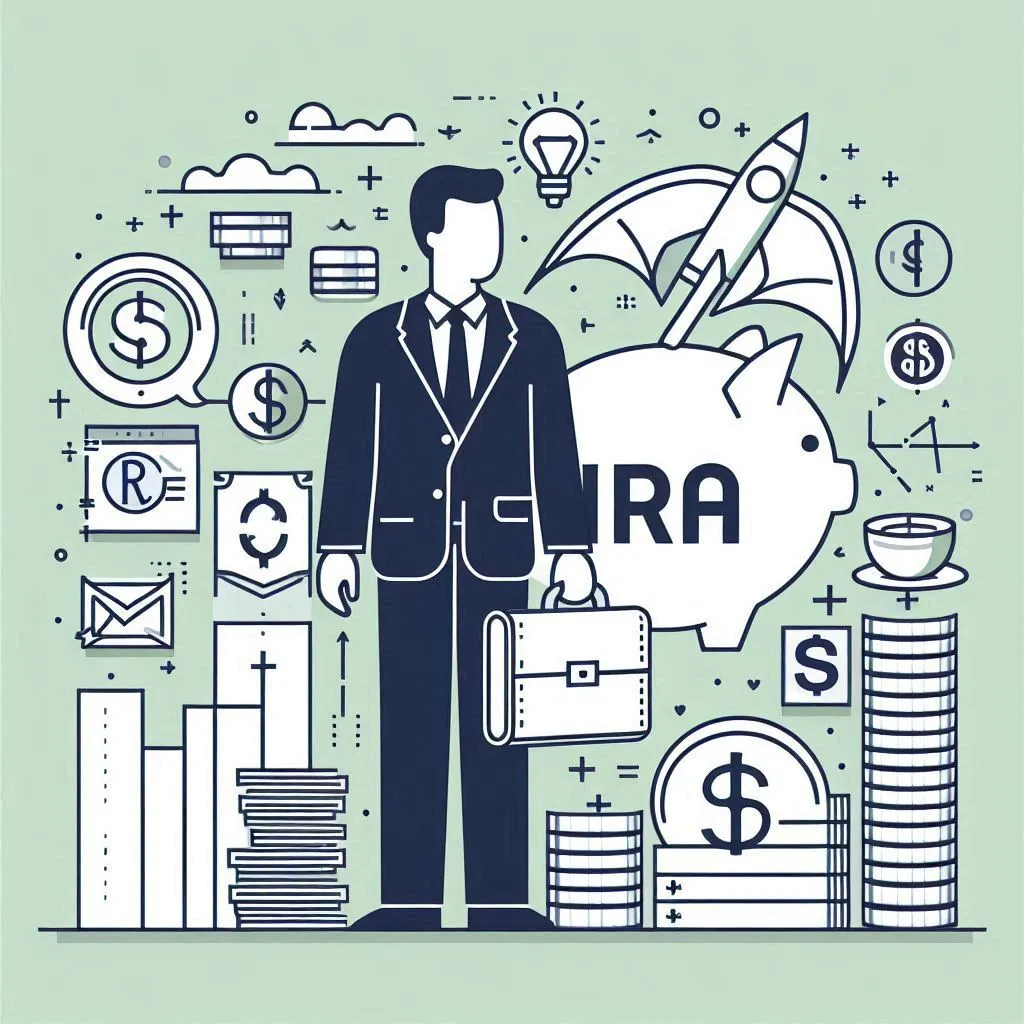
Investment Strategies
Investment strategies are systematic plans or approaches used by investors to achieve specific financial goals, such as capital growth, income generation, or risk management. These strategies can vary widely based on factors like risk tolerance, investment horizon, and market conditions. Common investment strategies include value investing (buying undervalued stocks), growth investing (focusing on companies with high growth potential), income investing (targeting assets that provide regular income, like dividends or bonds), and diversification (spreading investments across different asset classes to reduce risk). Effective investment strategies align with the investor's financial objectives and adapt to changing market environments.
Investment Strategies Guide




Investment Strategies Glossary
- Absolute Return(Noun)
- /ab-suh-loot ri-turn/
- Definition: An investment strategy focused on achieving positive returns regardless of market conditions, often using diverse assets and techniques to minimize losses.
- Etymology: "Absolute" from Latin "absolutus," meaning "complete," and "return" from Old French "retourner," meaning "to turn back." Absolute return strategies seek to generate consistent positive returns.
- Similar: Uncorrelated return, Total return
- Opposite: Relative return
- Example: "The hedge fund focuses on absolute return strategies to ensure gains even in volatile markets."
- Active Investing(Noun)
- /ak-tiv in-ves-ting/
- Definition: An investment approach that involves frequent buying and selling of securities based on market research and analysis to outperform market indices.
- Etymology: "Active" from Latin "activus," meaning "engaged in action," and "investing" from Latin "investire," meaning "to clothe." Active investing requires active management and decision-making.
- Similar: Active management, Tactical investing
- Opposite: Passive investing
- Example: "Active investing requires constant market monitoring and quick decisions to capitalize on market movements."
- Balanced Funds(Noun)
- /bal-uhnst fuhnds/
- Definition: A type of mutual fund that invests in a mix of equities and fixed-income securities to provide both growth and income, balancing risk and return.
- Etymology: "Balanced" from Latin "balanciare," meaning "to weigh," and "funds" from Old French "fons," meaning "bottom or base." Balanced funds aim to diversify investments across asset classes.
- Similar: Hybrid funds, Mixed funds
- Opposite: Equity-only funds, Fixed-income funds
- Example: "Balanced funds are ideal for investors seeking a combination of income and capital appreciation."
- Barbell Strategy(Noun)
- /bahr-bel strat-uh-jee/
- Definition: An investment strategy that involves holding assets at opposite ends of the risk spectrum, such as a mix of high-risk, high-reward securities and low-risk, low-reward securities, while avoiding middle-risk investments.
- Etymology: "Barbell" from Old English "beor," meaning "bear," and "bell," symbolizing weights. In finance, it refers to the strategy's emphasis on balancing extreme risk profiles.
- Similar: Extremes strategy, Bi-modal investing
- Opposite: Core investing
- Example: "The barbell strategy allows investors to benefit from both stable and volatile market conditions."
- Blue Chip Investing(Noun)
- /bloo chip in-ves-ting/
- Definition: An investment strategy focused on purchasing shares of large, well-established, and financially sound companies with a history of stable earnings and dividend payments.
- Etymology: "Blue chip" from poker, where blue chips have the highest value, and "investing" from Latin "investire," meaning "to clothe." Blue chip investing prioritizes stability and reliability.
- Similar: Large-cap investing, Safe investing
- Opposite: Penny stock investing
- Example: "Blue chip investing is favored by those seeking long-term stability and consistent returns."
- Bond Laddering(Noun)
- /bond lad-er-ing/
- Definition: An investment strategy involving the purchase of bonds with staggered maturity dates to reduce interest rate risk and provide a steady income stream.
- Etymology: "Bond" from Latin "bond," meaning "to bind," and "laddering" from Old English "hlaedder," meaning "steps." Bond laddering spreads out investments across different maturities.
- Similar: Laddered bonds, Staggered maturity investing
- Opposite: Bullet strategy
- Example: "Bond laddering helps investors manage interest rate risk by ensuring bonds mature at regular intervals."
- Bottom-Up Investing(Noun)
- /bot-uhm up in-ves-ting/
- Definition: An investment approach that focuses on analyzing individual companies and their fundamentals rather than macroeconomic trends or industry sectors, often involving stock picking.
- Etymology: "Bottom" from Old English "botm," meaning "lowest part," and "up" from Old English "upp," meaning "higher." Bottom-up investing emphasizes company-specific analysis.
- Similar: Stock picking, Fundamental analysis
- Opposite: Top-down investing
- Example: "Bottom-up investing involves thorough research into a company's financial health and growth prospects."
- Commodities Investing(Noun)
- /kuh-mod-i-teez in-ves-ting/
- Definition: An investment strategy that involves buying and trading physical goods like gold, oil, and agricultural products, or investing in futures contracts related to these commodities.
- Etymology: "Commodities" from Latin "commoditas," meaning "advantage or benefit," and "investing" from Latin "investire," meaning "to clothe." Commodities investing focuses on tangible assets.
- Similar: Real asset investing, Resource investing
- Opposite: Equities investing
- Example: "Commodities investing can provide a hedge against inflation and currency fluctuations."
- Commodities Strategy(Noun)
- /kuh-mod-i-teez strat-uh-jee/
- Definition: A tactical approach to investing in commodities, including decisions about which commodities to invest in, when to buy or sell, and how to diversify across different types of commodities.
- Etymology: "Commodities" from Latin "commoditas," meaning "advantage," and "strategy" from Greek "strategia," meaning "generalship." A commodities strategy outlines how to profit from commodity markets.
- Similar: Resource strategy, Hard asset strategy
- Opposite: Equity strategy
- Example: "The commodities strategy focused on investing in metals and energy to capitalize on global demand trends."
- Convertible Bonds(Noun)
- /kon-vur-tuh-bl bonds/
- Definition: Bonds that can be converted into a predetermined number of shares of the issuing company's stock, offering the benefits of fixed-income securities with the potential for equity upside.
- Etymology: "Convertible" from Latin "convertere," meaning "to turn around," and "bonds" from Latin "bond," meaning "to bind." Convertible bonds offer flexibility between debt and equity.
- Similar: Hybrid securities, Convertibles
- Opposite: Straight bonds
- Example: "Investors like convertible bonds because they provide fixed interest payments with the option to convert to equity if the stock price rises."
- Core-Satellite Strategy(Noun)
- /kohr sat-l-ahyt strat-uh-jee/
- Definition: An investment approach that combines a core portfolio of low-risk, often passive investments with smaller, higher-risk satellite investments to enhance returns and manage risk.
- Etymology: "Core" from Old French "cor," meaning "heart," and "satellite" from Latin "satelles," meaning "attendant." The strategy balances stability with opportunistic investing.
- Similar: Core-and-explore strategy, Hub-and-spoke strategy
- Opposite: All-core strategy
- Example: "The core-satellite strategy allowed him to maintain a stable portfolio while taking advantage of high-growth opportunities."
- Covered Call(Noun)
- /kuhv-erd kahl/
- Definition: An options strategy where an investor holds a long position in an asset and sells call options on the same asset to generate income from the premiums, providing downside protection at the cost of capping potential upside.
- Etymology: "Covered" from Old English "cofra," meaning "to protect," and "call" from Old English "ceallian," meaning "to shout." A covered call strategy generates income through option premiums.
- Similar: Covered option, Buy-write strategy
- Opposite: Naked call
- Example: "He used a covered call strategy to generate extra income on his stock holdings while limiting potential gains."
- Crowdfunding(Noun)
- /krowd-fuhn-ding/
- Definition: A method of raising capital by soliciting small amounts of money from a large number of people, typically via online platforms, to fund a new business venture or project.
- Etymology: "Crowd" from Old English "crūdan," meaning "to press or push," and "funding" from Old English "fūnd," meaning "bottom or base." Crowdfunding taps into a broad base of contributors.
- Similar: Online fundraising, Peer-to-peer funding
- Opposite: Traditional financing
- Example: "The startup used crowdfunding to raise initial capital and gain early supporters for its product."
- Currency Hedging(Noun)
- /kur-uhn-see hej-ing/
- Definition: A strategy used to protect against potential losses due to fluctuations in foreign exchange rates, typically involving the use of derivatives such as options and forward contracts.
- Etymology: "Currency" from Latin "currere," meaning "to run," and "hedging" from Old English "hecg," meaning "boundary." Currency hedging reduces risk from exchange rate movements.
- Similar: Forex hedging, FX risk management
- Opposite: Currency speculation
- Example: "The multinational corporation employed currency hedging to protect its revenues from adverse exchange rate movements."
- Cyclical Investing(Noun)
- /sik-li-kuhl in-ves-ting/
- Definition: An investment strategy that focuses on companies whose performance is closely tied to economic cycles, buying during downturns and selling during upswings to capitalize on the business cycle.
- Etymology: "Cyclical" from Greek "kyklos," meaning "circle," and "investing" from Latin "investire," meaning "to clothe." Cyclical investing aligns with economic cycles to maximize returns.
- Similar: Business cycle investing, Economic cycle investing
- Opposite: Defensive investing
- Example: "Cyclical investing requires timing the market to buy during economic downturns and sell during expansions."
- Defensive Equity(Noun)
- /: dih-fen-siv ek-wi-tee/
- Definition: A stock or portfolio strategy focused on companies that provide consistent returns and are less sensitive to economic downturns, often including consumer staples and utilities.
- Etymology: "Defensive" from Latin "defensivus," meaning "serving to defend," and "equity" from Old French "equité," meaning "fairness." Defensive equity seeks to protect capital in volatile markets.
- Similar: Safe-haven stocks, Conservative equity
- Opposite: Aggressive equity
- Example: "Defensive equity investments are popular during economic uncertainty due to their stable returns."
- Direct Real Estate(Noun)
- /dih-rekt reel ih-steyt/
- Definition: An investment strategy involving the purchase of physical property such as residential, commercial, or industrial real estate, rather than through real estate investment trusts (REITs) or other indirect methods.
- Etymology: "Direct" from Latin "directus," meaning "straight," and "real estate" from Medieval Latin "res," meaning "property or thing." Direct real estate involves hands-on ownership of property.
- Similar: Property investment, Real property investing
- Opposite: Indirect real estate
- Example: "Direct real estate investing can offer substantial returns but requires active management and significant capital."
- Distressed Debt Investing(Noun)
- /dih-strest det in-ves-ting/
- Definition: An investment strategy focused on purchasing the debt of companies that are in financial distress or bankruptcy, often at a significant discount, with the potential for high returns if the company recovers.
- Etymology: "Distressed" from Latin "distringere," meaning "to stretch apart," and "debt" from Old French "dette," meaning "something owed." Distressed debt investing involves high risk and potential for high returns.
- Similar: Troubled debt investing, Vulture investing
- Opposite: Investment-grade debt investing
- Example: "Distressed debt investing requires careful analysis of a company's restructuring potential and legal standing."
- Dividend Growth Investing(Noun)
- /div-i-dend grohth in-ves-ting/
- Definition: An investment strategy that focuses on buying stocks of companies with a history of consistently increasing their dividend payments, often leading to long-term capital appreciation and income.
- Etymology: "Dividend" from Latin "dividendum," meaning "a thing to be divided," and "growth" from Old English "growan," meaning "to grow." Dividend growth investing seeks companies with growing income streams.
- Similar: Dividend growth strategy, Income growth investing
- Opposite: Dividend capture
- Example: "Dividend growth investing can provide a reliable income stream and protect against inflation over time."
- Dividend Investing(Noun)
- /div-i-dend in-ves-ting/
- Definition: An investment strategy focused on purchasing stocks that pay regular dividends, providing a steady income stream in addition to potential capital appreciation.
- Etymology: "Dividend" from Latin "dividendum," meaning "a thing to be divided," and "investing" from Latin "investire," meaning "to clothe." Dividend investing focuses on generating income from dividends.
- Similar: Income investing, Dividend income strategy
- Opposite: Growth investing
- Example: "Dividend investing is popular among retirees seeking a steady income without selling their shares."
- Duration Strategy(Noun)
- /door-ey-shuhn strat-uh-jee/
- Definition: A fixed-income investment approach that focuses on managing the duration of a bond portfolio to align with interest rate expectations and minimize risk, often by adjusting the average maturity of bonds.
- Etymology: "Duration" from Latin "durare," meaning "to last," and "strategy" from Greek "strategia," meaning "generalship." Duration strategy manages interest rate risk by adjusting bond maturities.
- Similar: Bond duration management, Fixed-income timing
- Opposite: Buy-and-hold strategy
- Example: "The duration strategy was adjusted to shorten the portfolio's duration in anticipation of rising interest rates."
- Equity Growth Strategy(Noun)
- /ek-wi-tee grohth strat-uh-jee/
- Definition: An investment approach focused on selecting stocks expected to grow at an above-average rate compared to other companies, aiming for capital appreciation rather than income generation.
- Etymology: "Equity" from Old French "equité," meaning "fairness," and "growth" from Old English "growan," meaning "to grow." Equity growth strategy targets companies with strong growth prospects.
- Similar: Growth investing, High-growth equity strategy
- Opposite: Income investing
- Example: "The equity growth strategy focused on technology companies with strong earnings growth potential."
- Equity Income(Noun)
- /ek-wi-tee in-kuhm/
- Definition: An investment strategy that focuses on generating income through dividends from equities, typically involving companies with stable earnings and consistent dividend payments.
- Etymology: "Equity" from Old French "equité," meaning "fairness," and "income" from Old English "incuman," meaning "to come in." Equity income strategy emphasizes dividend-paying stocks.
- Similar: Dividend income, Income equity
- Opposite: Growth equity
- Example: "Equity income strategies are popular among investors seeking regular cash flow from their investments."
- ESG Investing(Noun)
- /ee-es-jee in-ves-ting/
- Definition: An investment strategy that considers environmental, social, and governance factors alongside financial returns, aiming to generate positive societal impact and sustainable returns.
- Etymology: "Environmental" from Latin "environmentem," meaning "surrounding," "social" from Latin "socialis," meaning "companionship," and "governance" from Old French "governer," meaning "to rule." ESG investing prioritizes ethical and sustainable investments.
- Similar: Sustainable investing, Responsible investing
- Opposite: Traditional investing
- Example: "ESG investing has gained popularity as investors seek to align their portfolios with their values."
- Event-Driven Strategy(Noun)
- /ih-vent-driv-uhn strat-uh-jee/
- Definition: An investment approach that seeks to profit from specific corporate events such as mergers, acquisitions, bankruptcies, or reorganizations, often through arbitrage or other tactical investments.
- Etymology: "Event" from Latin "eventus," meaning "outcome," and "driven" from Old English "drifan," meaning "to drive." Event-driven strategies capitalize on corporate events that impact stock prices.
- Similar: Merger arbitrage, Special situations investing
- Opposite: Passive investing
- Example: "The event-driven strategy focused on acquiring stocks of companies involved in upcoming mergers to capture arbitrage profits."
- Factor Investing(Noun)
- /fak-ter in-ves-ting/
- Definition: An investment strategy that targets specific factors, such as size, value, momentum, or volatility, that have been shown to drive returns, aiming to achieve better risk-adjusted returns.
- Etymology: "Factor" from Latin "factor," meaning "doer or maker," and "investing" from Latin "investire," meaning "to clothe." Factor investing selects securities based on underlying characteristics associated with higher returns.
- Similar: Smart beta, Quantitative factor strategy
- Opposite: Broad market investing
- Example: "Factor investing allows investors to tilt their portfolios toward characteristics that have historically outperformed the market."
- Fixed-Income Strategy(Noun)
- /fikst in-kuhm strat-uh-jee/
- Definition: An investment approach that focuses on bonds or other fixed-income securities to generate regular interest income, typically with lower risk and more stability compared to equities.
- Etymology: "Fixed" from Latin "fixus," meaning "settled," "income" from Old English "incuman," meaning "to come in," and "strategy" from Greek "strategia," meaning "generalship." Fixed-income strategy prioritizes stability and income through bond investments.
- Similar: Bond strategy, Income strategy
- Opposite: Equity strategy
- Example: "A fixed-income strategy is often used by conservative investors seeking steady returns with lower risk."
- Foreign Exchange Strategy(Noun)
- /fawr-in eks-chaynj strat-uh-jee/
- Definition: An investment approach that involves trading currencies to capitalize on fluctuations in exchange rates, often used by speculators, hedgers, and businesses with international operations.
- Etymology: "Foreign" from Old French "forain," meaning "outside," "exchange" from Latin "exchangium," meaning "to trade," and "strategy" from Greek "strategia," meaning "generalship." Foreign exchange strategy focuses on profiting from currency movements.
- Similar: Forex strategy, Currency trading
- Opposite: Domestic investment strategy
- Example: "The foreign exchange strategy involved taking advantage of the euro's appreciation against the dollar."
- Global Macro Strategy(Noun)
- /gloh-buhl mak-roh strat-uh-jee/
- Definition: An investment approach that takes positions based on broad economic and political views of entire countries or regions, often using a combination of asset classes such as currencies, bonds, commodities, and equities.
- Etymology: "Global" from Latin "globus," meaning "sphere," "macro" from Greek "makros," meaning "large," and "strategy" from Greek "strategia," meaning "generalship." Global macro strategy involves large-scale investment decisions based on global trends.
- Similar: Macro investing, Global strategy
- Opposite: Micro strategy
- Example: "The hedge fund's global macro strategy capitalized on geopolitical events affecting currency and commodity markets."
- Gold Investing(Noun)
- /gohld in-ves-ting/
- Definition: An investment strategy focused on buying and holding gold or gold-related assets, such as gold mining stocks or ETFs, to hedge against inflation, currency risk, and economic instability.
- Etymology: "Gold" from Old English "geolu," meaning "yellow," and "investing" from Latin "investire," meaning "to clothe." Gold investing seeks to preserve wealth through ownership of physical or financial gold assets.
- Similar: Precious metals investing, Gold strategy
- Opposite: Paper assets investing
- Example: "Gold investing is often seen as a safe haven during times of economic uncertainty."
- Growth at a Reasonable Price (GARP)(Noun)
- /grohth at uh ree-zuhn-uh-buhl prahys/
- Definition: An investment strategy that combines principles of both growth and value investing by seeking companies that have strong growth potential but are also trading at reasonable valuations.
- Etymology: "Growth" from Old English "growan," meaning "to grow," "reasonable" from Old French "raisonnable," meaning "having sound judgment," and "price" from Old French "pris," meaning "value." GARP focuses on balanced investments between growth and value.
- Similar: Balanced growth, Value growth investing
- Opposite: Pure growth investing
- Example: "GARP investors look for companies that are growing but still offer good value relative to their earnings."
- Hedge Fund Strategy(Noun)
- /hej fuhnd strat-uh-jee/
- Definition: A set of investment approaches used by hedge funds to achieve high returns, often involving advanced techniques like leverage, derivatives, short selling, and arbitrage, tailored to specific market opportunities.
- Etymology: "Hedge" from Old English "hecg," meaning "boundary," "fund" from Old French "fons," meaning "bottom or base," and "strategy" from Greek "strategia," meaning "generalship." Hedge fund strategies aim to generate returns regardless of market conditions.
- Similar: Alternative investment strategy, High-risk strategy
- Opposite: Mutual fund strategy
- Example: "The hedge fund strategy involved using leverage and short selling to capitalize on market inefficiencies."
- High-Yield Investing(Noun)
- /hahy-yeeld in-ves-ting/
- Definition: An investment strategy focused on acquiring securities, such as bonds or dividend-paying stocks, that offer higher-than-average yields, often with higher associated risks.
- Etymology: "High" from Old English "heah," meaning "elevated," "yield" from Old English "gieldan," meaning "to pay," and "investing" from Latin "investire," meaning "to clothe." High-yield investing seeks greater returns through higher income securities.
- Similar: Yield-seeking investing, Income-focused investing
- Opposite: Low-yield investing
- Example: "High-yield investing can generate substantial income, but it often involves taking on additional credit risk."
- Income Investing(Noun)
- /in-kuhm in-ves-ting/
- Definition: An investment strategy that prioritizes generating regular income through interest payments, dividends, or other income streams, typically focusing on bonds, dividend stocks, and real estate.
- Etymology: "Income" from Old English "incuman," meaning "to come in," and "investing" from Latin "investire," meaning "to clothe." Income investing emphasizes steady cash flow over capital appreciation.
- Similar: Income strategy, Cash flow investing
- Opposite: Growth investing
- Example: "Income investing is popular among retirees who rely on consistent payments to fund their living expenses."
- Income Laddering(Noun)
- /in-kuhm lad-er-ing/
- Definition: A strategy that involves staggering investments in fixed-income securities with varying maturities to create a steady stream of income while managing interest rate risk.
- Etymology: "Income" from Old English "incuman," meaning "to come in," and "laddering" from Old English "hlaedder," meaning "steps." Income laddering spreads out investments to ensure regular income.
- Similar: Bond laddering, Staggered income strategy
- Opposite: Lump-sum investing
- Example: "Income laddering allows investors to maintain cash flow and manage interest rate changes effectively."
- Income Trusts(Noun)
- /in-kuhm truhsts/
- Definition: A type of investment fund that holds income-generating assets such as real estate, oil, and gas, or infrastructure, and distributes the income to investors, often used in Canada and the UK.
- Etymology: "Income" from Old English "incuman," meaning "to come in," and "trust" from Old Norse "traust," meaning "confidence." Income trusts distribute income generated from underlying assets to investors.
- Similar: Income funds, Trust units
- Opposite: Growth trusts
- Example: "Income trusts are popular for their ability to provide high yields, particularly in real estate and energy sectors."
- Index Investing(Noun)
- /in-deks in-ves-ting/
- Definition: A passive investment strategy that aims to replicate the performance of a specific market index, such as the S&P 500, by purchasing all or a representative sample of the index’s components.
- Etymology: "Index" from Latin "index," meaning "forefinger or pointer," and "investing" from Latin "investire," meaning "to clothe." Index investing tracks the performance of a market index.
- Similar: Passive investing, Index tracking
- Opposite: Active investing
- Example: "Index investing is popular for its low costs and ability to match market returns over time."
- Inflation Hedging(Noun)
- /in-fley-shuhn hej-ing/
- Definition: An investment strategy designed to protect against the loss of purchasing power due to inflation, often involving assets like real estate, commodities, or inflation-linked bonds.
- Etymology: "Inflation" from Latin "inflare," meaning "to blow into," and "hedging" from Old English "hecg," meaning "boundary." Inflation hedging seeks to preserve wealth by investing in assets that rise with inflation.
- Similar: Inflation protection, Anti-inflation strategy
- Opposite: Deflation strategy
- Example: "Inflation hedging strategies often include investments in gold and real estate, which tend to appreciate with rising prices."
- Inflation-Linked Bonds(Noun)
- /in-fley-shuhn linkt bonds/
- Definition: Bonds whose principal and interest payments are adjusted based on inflation rates, providing investors with protection against inflation by maintaining the purchasing power of their investment.
- Etymology: "Inflation" from Latin "inflare," meaning "to blow into," "linked" from Old English "hlinc," meaning "ridge or rising ground," and "bonds" from Latin "bond," meaning "to bind." Inflation-linked bonds adjust payouts to keep pace with inflation.
- Similar: Inflation-protected bonds, TIPS (Treasury Inflation-Protected Securities)
- Opposite: Fixed-rate bonds
- Example: "Inflation-linked bonds are a good option for investors seeking to protect their portfolios from inflation."
- Infrastructure Investing(Noun)
- /in-fruh-struhk-cher in-ves-ting/
- Definition: An investment strategy focused on acquiring assets related to essential public services, such as transportation, utilities, and communications, often providing stable returns due to long-term contracts and government backing.
- Etymology: "Infrastructure" from Latin "infra," meaning "below," and "structure" from Latin "structura," meaning "arrangement." Infrastructure investing involves funding and profiting from essential physical systems.
- Similar: Infrastructure funds, Public works investing
- Opposite: Technology investing
- Example: "Infrastructure investing can offer stable, inflation-protected returns due to the essential nature of the assets."
- Large Cap Investing(Noun)
- /lahrj kap in-ves-ting/
- Definition: An investment strategy that focuses on companies with a large market capitalization, typically over $10 billion, often considered safer with steady growth prospects compared to smaller companies.
- Etymology: "Large" from Latin "largus," meaning "abundant," and "cap" from "capitalization," derived from Latin "caput," meaning "head." Large-cap investing targets established, financially stable companies.
- Similar: Blue-chip investing, Big-cap investing
- Opposite: Small-cap investing
- Example: "Large-cap investing is favored by risk-averse investors who prefer the stability of well-established companies."
- Leveraged Investing(Noun)
- /lev-er-ijd in-ves-ting/
- Definition: An investment strategy that involves using borrowed money or financial derivatives to increase the potential return of an investment, amplifying both gains and losses.
- Etymology: "Leveraged" from Old French "levier," meaning "to raise," and "investing" from Latin "investire," meaning "to clothe." Leveraged investing uses borrowed funds to enhance potential returns.
- Similar: Leveraged trading, Gearing
- Opposite: Unleveraged investing
- Example: "Leveraged investing can lead to significant profits, but it also comes with the risk of substantial losses."
- Long/Short Equity(Noun)
- /lawng-shawrt ek-wi-tee/
- Definition: An investment strategy that involves taking long positions in stocks expected to increase in value and short positions in stocks expected to decrease, aiming to generate returns in both rising and falling markets.
- Etymology: "Long" from Old English "lang," meaning "extended," "short" from Old English "sceort," meaning "not long," and "equity" from Old French "equité," meaning "fairness." Long/short equity strategies seek to profit from both up and down movements in the market.
- Similar: Hedge strategy, Market-neutral investing
- Opposite: Long-only investing
- Example: "The long/short equity fund outperformed during the market downturn by shorting overvalued stocks."
- Market Neutral(Noun)
- /mahr-kit noo-truhl/
- Definition: An investment strategy designed to achieve returns that are independent of market direction by balancing long and short positions, aiming to minimize market risk and focus on individual stock selection.
- Etymology: "Market" from Latin "mercatus," meaning "trade," and "neutral" from Latin "neutralis," meaning "not taking sides." Market neutral strategies aim to isolate performance from broader market movements.
- Similar: Non-directional investing, Balanced investing
- Opposite: Directional investing
- Example: "Market-neutral strategies are popular among hedge funds that aim to generate returns regardless of market trends."
- Merger Arbitrage(Noun)
- /mur-jer ahr-bi-trahj/
- Definition: An investment strategy that seeks to profit from the price discrepancies that occur during mergers and acquisitions, typically by buying the stock of the target company and shorting the stock of the acquiring company.
- Etymology: "Merger" from Latin "mergere," meaning "to dip or plunge," and "arbitrage" from Old French "arbitrer," meaning "to judge." Merger arbitrage exploits price differences between companies involved in mergers.
- Similar: Risk arbitrage, Event-driven strategy
- Opposite: Long-only investing
- Example: "Merger arbitrage can be profitable, but it requires careful analysis of the likelihood that a deal will close."
- Mezzanine Financing(Noun)
- /mez-uh-neen fi-nan-sing/
- Definition: A hybrid form of financing that combines debt and equity, typically used in private equity and real estate, where the lender has the option to convert the debt into equity if the loan is not repaid.
- Etymology: "Mezzanine" from Italian "mezzanino," meaning "middle," and "financing" from Latin "financiare," meaning "to provide with funds." Mezzanine financing sits between senior debt and equity in a company's capital structure.
- Similar: Subordinated debt, Hybrid financing
- Opposite: Senior debt
- Example: "Mezzanine financing was used to complete the company's acquisition, providing additional capital without diluting ownership immediately."
- Multi-Asset Strategy(Noun)
- /muhl-tee as-et strat-uh-jee/
- Definition: An investment approach that allocates capital across multiple asset classes, such as stocks, bonds, real estate, and commodities, to diversify risk and optimize returns based on market conditions.
- Etymology: "Multi" from Latin "multus," meaning "many," "asset" from Old French "asez," meaning "sufficient," and "strategy" from Greek "strategia," meaning "generalship." Multi-asset strategy diversifies investments across various asset types.
- Similar: Asset allocation strategy, Diversified investing
- Opposite: Single-asset strategy
- Example: "A multi-asset strategy can help mitigate risk by spreading investments across different types of assets."
- Oil Investing(Noun)
- /oyl in-ves-ting/
- Definition: An investment strategy that focuses on buying oil-related assets, such as stocks in oil companies, futures contracts, or oil ETFs, often to capitalize on rising oil prices or hedge against inflation.
- Etymology: "Oil" from Old French "oile," meaning "olive oil," and "investing" from Latin "investire," meaning "to clothe." Oil investing seeks to profit from fluctuations in the oil market.
- Similar: Energy investing, Petroleum investing
- Opposite: Renewable energy investing
- Example: "Oil investing can be lucrative during periods of rising demand and geopolitical instability."
- Opportunistic Investing(Noun)
- /op-er-too-nis-tik in-ves-ting/
- Definition: An investment strategy that involves taking advantage of short-term opportunities in the market, often based on specific events, market inefficiencies, or mispriced assets, with the aim of generating quick profits.
- Etymology: "Opportunistic" from Latin "opportunus," meaning "favorable," and "investing" from Latin "investire," meaning "to clothe." Opportunistic investing focuses on capturing immediate market opportunities.
- Similar: Tactical investing, Event-driven investing
- Opposite: Long-term investing
- Example: "Opportunistic investing can be high-risk but also offers the potential for high rewards when market conditions are right."
- Passive Investing(Noun)
- /pas-iv in-ves-ting/
- Definition: An investment strategy that aims to replicate the performance of a specific market index by holding all or a representative sample of the securities in that index, typically involving low costs and minimal trading.
- Etymology: "Passive" from Latin "passivus," meaning "suffering or enduring," and "investing" from Latin "investire," meaning "to clothe." Passive investing focuses on matching market performance rather than outperforming it.
- Similar: Index investing, Buy-and-hold investing
- Opposite: Active investing
- Example: "Passive investing is often recommended for long-term investors looking for steady returns with lower costs."
- Peer-to-Peer Lending(Noun)
- /peer-tuh-peer len-ding/
- Definition: A form of direct lending where individuals lend money to other individuals or businesses through online platforms, bypassing traditional financial intermediaries like banks, often offering higher returns and risks.
- Etymology: "Peer" from Old French "per," meaning "equal," and "lending" from Old English "lænan," meaning "to lend." Peer-to-peer lending connects borrowers directly with lenders.
- Similar: P2P lending, Social lending
- Opposite: Bank lending
- Example: "Peer-to-peer lending can provide higher yields for investors but comes with increased default risk compared to traditional savings accounts."
- Precious Metals Strategy(Noun)
- /presh-uhs met-uhlz strat-uh-jee/
- Definition: An investment approach that involves buying and holding precious metals like gold, silver, platinum, and palladium, often used as a hedge against inflation, currency devaluation, and economic instability.
- Etymology: "Precious" from Latin "pretiosus," meaning "costly," "metals" from Greek "metallon," meaning "mine or metal," and "strategy" from Greek "strategia," meaning "generalship." Precious metals strategy focuses on preserving wealth through tangible assets.
- Similar: Metals investing, Hard asset strategy
- Opposite: Paper assets investing
- Example: "The precious metals strategy included a significant allocation to gold as a safe haven during economic uncertainty."
- Principal-Protected Notes(Noun)
- /prin-suh-puhl pruh-tekt-ed nohts/
- Definition: A type of structured financial product that guarantees the return of the original investment, or principal, at maturity, regardless of market performance, while offering potential gains linked to the performance of an underlying asset or index.
- Etymology: "Principal" from Latin "principalis," meaning "first in importance," "protected" from Latin "protegere," meaning "to cover in front," and "notes" from Latin "nota," meaning "mark or sign." Principal-protected notes offer a safety net with potential upside.
- Similar: Capital-guaranteed notes, Structured notes
- Opposite: High-risk bonds
- Example: "Principal-protected notes are appealing to conservative investors who want exposure to market gains without risking their initial capital."
- Private Debt(Noun)
- /pry-vit det/
- Definition: Debt investments that are not issued or traded on public markets, typically involving loans or bonds issued by private companies or direct lending to businesses, often offering higher yields in exchange for higher risk.
- Etymology: "Private" from Latin "privatus," meaning "restricted," and "debt" from Old French "dette," meaning "something owed." Private debt involves lending that is not accessible to the general public.
- Similar: Non-public debt, Direct lending
- Opposite: Public debt
- Example: "Private debt investments can offer higher returns than public bonds, but they also carry increased credit risk."
- Private Equity(Noun)
- /pry-vit ek-wi-tee/
- Definition: An investment in private companies, typically through direct ownership or buyouts, where the investor aims to improve the business and sell it later at a profit, often involving long-term commitments and active management.
- Etymology: "Private" from Latin "privatus," meaning "restricted," and "equity" from Old French "equité," meaning "fairness." Private equity involves investing in non-publicly traded companies.
- Similar: Venture capital, Buyout investing
- Opposite: Public equity
- Example: "Private equity firms often buy struggling companies, restructure them, and sell them at a higher value."
- Quantitative Investing(Noun)
- /kwon-ti-tey-tiv in-ves-ting/
- Definition: An investment strategy that uses mathematical models, algorithms, and statistical analysis to make investment decisions, often involving automated trading and focusing on factors such as momentum, volatility, and value.
- Etymology: "Quantitative" from Latin "quantitas," meaning "amount," and "investing" from Latin "investire," meaning "to clothe." Quantitative investing relies on numerical data and computer models.
- Similar: Quant investing, Algorithmic trading
- Opposite: Discretionary investing
- Example: "Quantitative investing leverages data-driven models to identify and exploit market inefficiencies."
- Real Estate Investing(Noun)
- /reel ih-steyt in-ves-ting/
- Definition: The practice of purchasing, owning, managing, renting, or selling real estate for profit, often involving residential, commercial, or industrial properties, with the potential for income through rent and capital appreciation.
- Etymology: "Real" from Medieval Latin "res," meaning "thing or property," "estate" from Old French "estat," meaning "status," and "investing" from Latin "investire," meaning "to clothe." Real estate investing focuses on generating returns from property assets.
- Similar: Property investing, Real asset investing
- Opposite: Paper asset investing
- Example: "Real estate investing can provide passive income through rental properties and the potential for long-term capital gains."
- Rebalancing(Noun)
- /ree-bal-uhn-sing/
- Definition: The process of realigning the proportions of assets in a portfolio back to their original targets, often done periodically to maintain a desired risk profile, especially after market movements have shifted the portfolio’s asset allocation.
- Etymology: "Re-" from Latin "re," meaning "again," and "balancing" from Old French "balancier," meaning "to weigh." Rebalancing ensures that a portfolio's risk and return objectives are maintained.
- Similar: Portfolio rebalancing, Asset allocation adjustment
- Opposite: Buy-and-hold strategy
- Example: "Rebalancing the portfolio after significant market gains helps maintain the original risk exposure."
- REIT Strategy(Noun)
- /reet strat-uh-jee/
- Definition: An investment approach focused on buying shares of Real Estate Investment Trusts (REITs), which are companies that own, operate, or finance income-producing real estate, offering a way to invest in real estate without owning physical property.
- Etymology: "REIT" from "Real Estate Investment Trust," and "strategy" from Greek "strategia," meaning "generalship." REIT strategy allows investors to gain exposure to real estate through publicly traded securities.
- Similar: Real estate securities strategy, Property fund investing
- Opposite: Direct real estate investing
- Example: "The REIT strategy provided diversification and steady income through investments in commercial properties."
- Relative Return(Noun)
- /rel-uh-tiv ri-turn/
- Definition: A measure of the performance of an investment relative to a benchmark or market index, indicating whether the investment has outperformed or underperformed compared to the broader market.
- Etymology: "Relative" from Latin "relativus," meaning "related," and "return" from Old French "retourner," meaning "to turn back." Relative return compares the performance of an investment against a standard benchmark.
- Similar: Excess return, Comparative return
- Opposite: Absolute return
- Example: "The fund's relative return was higher than the benchmark, indicating it outperformed the market."
- Risk Arbitrage(Noun)
- /risk ahr-bi-trahj/
- Definition: An investment strategy that involves taking advantage of pricing inefficiencies between two related securities, often during events like mergers and acquisitions, where the risk of the deal not closing is balanced against the potential profit.
- Etymology: "Risk" from Old Italian "risco," meaning "danger," and "arbitrage" from Old French "arbitrer," meaning "to judge." Risk arbitrage seeks to profit from event-driven market opportunities.
- Similar: Event-driven arbitrage, Merger arbitrage
- Opposite: Buy-and-hold investing
- Example: "Risk arbitrage can be profitable, but it requires careful analysis of the likelihood that the targeted deal will succeed."
- Risk Parity(Noun)
- /risk par-i-tee/
- Definition: An investment strategy that allocates capital based on the risk contribution of each asset, aiming to achieve a more balanced and diversified portfolio where each asset class contributes equally to the overall risk.
- Etymology: "Risk" from Old Italian "risco," meaning "danger," and "parity" from Latin "paritas," meaning "equality." Risk parity aims to distribute risk evenly across a portfolio's assets.
- Similar: Equal risk allocation, Balanced risk strategy
- Opposite: Capital allocation strategy
- Example: "Risk parity seeks to create a portfolio where no single asset class dominates the risk profile, leading to a more stable performance."
- Sector Investing(Noun)
- /sek-ter in-ves-ting/
- Definition: An investment strategy that focuses on specific sectors or industries of the economy, such as technology, healthcare, or energy, often to capitalize on trends or anticipated growth within those areas.
- Etymology: "Sector" from Latin "sectio," meaning "cutting or division," and "investing" from Latin "investire," meaning "to clothe." Sector investing involves concentrating investments in particular segments of the market.
- Similar: Industry investing, Thematic investing
- Opposite: Broad market investing
- Example: "Sector investing allowed the fund to focus on technology stocks, which were expected to outperform due to rapid innovation."
- Small Cap Investing(Noun)
- /smawl kap in-ves-ting/
- Definition: An investment strategy focused on purchasing stocks of small-cap companies, typically with a market capitalization between $300 million and $2 billion, which often offer higher growth potential but with increased volatility and risk.
- Etymology: "Small" from Old English "smæl," meaning "narrow," and "cap" from "capitalization," derived from Latin "caput," meaning "head." Small-cap investing targets companies with high growth potential.
- Similar: Micro-cap investing, Growth investing
- Opposite: Large-cap investing
- Example: "Small-cap investing can be rewarding for those willing to accept higher volatility in exchange for potential high returns."
- Smart Beta(Noun)
- /smart bay-tuh/
- Definition: An investment strategy that uses alternative index construction rules rather than traditional market capitalization to achieve better risk-adjusted returns, often incorporating factors like value, momentum, or volatility.
- Etymology: "Smart" from Old English "smeart," meaning "quick or sharp," and "beta" from Greek "beta," the second letter of the Greek alphabet, used here to denote an enhanced version of traditional indexing. Smart beta strategies aim to outperform conventional market indices.
- Similar: Factor investing, Strategic beta
- Opposite: Market-cap weighted investing
- Example: "Smart beta strategies allow investors to capture specific factors that drive returns, such as value or low volatility."
- Statistical Arbitrage(Noun)
- /stuh-tis-ti-kuhl ahr-bi-trahj/
- Definition: A quantitative investment strategy that uses statistical and mathematical models to exploit pricing inefficiencies between related securities, typically involving high-frequency trading and mean reversion techniques.
- Etymology: "Statistical" from Latin "statisticus," meaning "pertaining to statecraft," and "arbitrage" from Old French "arbitrer," meaning "to judge." Statistical arbitrage leverages data-driven strategies to capitalize on short-term price discrepancies.
- Similar: Stat arb, Quant arbitrage
- Opposite: Discretionary trading
- Example: "Statistical arbitrage relies on algorithms to identify and exploit temporary mispricings between correlated securities."
- Structured Products(Noun)
- /struhk-cherd prod-uhkts/
- Definition: Financial instruments that are typically created by investment banks to offer tailored risk and return profiles, often combining derivatives with traditional assets like bonds or equities to achieve specific investment objectives.
- Etymology: "Structured" from Latin "structura," meaning "arrangement," and "products" from Latin "productus," meaning "to bring forth." Structured products are designed to meet specific investor needs by blending different financial instruments.
- Similar: Hybrid securities, Tailored investments
- Opposite: Simple securities
- Example: "Structured products can be complex, but they offer customized solutions to meet specific investment goals."
- TIPS Investing(Noun)
- /tips in-ves-ting/
- Definition: An investment strategy that focuses on purchasing Treasury Inflation-Protected Securities (TIPS), which are U.S. government bonds designed to protect investors from inflation by adjusting the principal according to changes in the Consumer Price Index (CPI).
- Etymology: "TIPS" stands for "Treasury Inflation-Protected Securities," with "Treasury" from Latin "thesaurus," meaning "treasure," and "investing" from Latin "investire," meaning "to clothe." TIPS investing seeks to preserve purchasing power during inflationary periods.
- Similar: Inflation-linked bond investing, CPI-protected investing
- Opposite: Fixed-rate bond investing
- Example: "TIPS investing is an effective way to protect a portfolio from the eroding effects of inflation."
- Top-Down Investing(Noun)
- /top-doun in-ves-ting/
- Definition: An investment approach that starts with analyzing macroeconomic factors and trends before selecting specific industries or companies to invest in, focusing on broad economic conditions as the primary driver of investment decisions.
- Etymology: "Top" from Old English "top," meaning "summit," and "down" from Old English "dūne," meaning "hill." Top-down investing involves starting from a macroeconomic perspective before narrowing down to specific investments.
- Similar: Macroeconomic investing, Sector-based investing
- Opposite: Bottom-up investing
- Example: "Top-down investing led the fund manager to allocate more capital to sectors poised to benefit from global economic growth."
- Total Return(Noun)
- /toh-tl ri-turn/
- Definition: A measure of an investment's overall performance, including both capital appreciation and income, such as dividends or interest, over a specified period, used to evaluate the full return generated by an asset.
- Etymology: "Total" from Latin "totalis," meaning "whole," and "return" from Old French "retourner," meaning "to turn back." Total return encompasses all forms of income and gains from an investment.
- Similar: Overall return, Comprehensive return
- Opposite: Price return
- Example: "Total return is an important metric for evaluating the true performance of an investment, taking into account both income and price appreciation."
- Value Averaging(Noun)
- /val-yoo av-er-ij-ing/
- Definition: An investment strategy that involves adjusting the amount invested in a portfolio to ensure that its value increases by a fixed amount each period, buying more shares when prices are low and fewer when prices are high, as opposed to dollar-cost averaging.
- Etymology: "Value" from Latin "valere," meaning "to be worth," and "averaging" from Old French "averer," meaning "to declare or assert." Value averaging aims to achieve a target growth rate by varying the investment amount.
- Similar: Dynamic investing, Target value strategy
- Opposite: Dollar-cost averaging
- Example: "Value averaging allows investors to systematically buy more when prices are low and less when prices are high, aiming for a consistent growth rate."
- Value Investing(Noun)
- /val-yoo in-ves-ting/
- Definition: An investment strategy that involves selecting stocks that appear to be undervalued based on fundamental analysis, with the expectation that they will increase in value over time as the market corrects the undervaluation.
- Etymology: "Value" from Latin "valere," meaning "to be worth," and "investing" from Latin "investire," meaning "to clothe." Value investing seeks to capitalize on market inefficiencies by purchasing undervalued securities.
- Similar: Fundamental investing, Discount investing
- Opposite: Growth investing
- Example: "Value investing involves identifying companies whose stock prices do not fully reflect their intrinsic worth, with the expectation of long-term gains."
Latest News

Best Sectors for ESG Investing in 2024
Stock Market Fundamentals | over 1 year ago

Best Sectors for Value Investing in 2024
Stock Market Fundamentals | over 1 year ago

Maximizing Your 401(k): Tips for 2024
Retirement Planning | over 1 year ago

The Impact of 401(k) Fees on Your Retirement Savings
Retirement Planning | over 1 year ago

Best Sectors for Dividend Investing in 2024
Stock Market Fundamentals | over 1 year ago

How to Identify High-Impact ESG Companies
Stock Market Fundamentals | over 1 year ago

How to Maximize Your Roth IRA Contributions in 2024
Retirement Planning | over 1 year ago
Frequently Asked Questions
What are investment strategies?
Investment strategies are plans or approaches that investors use to achieve specific financial goals, such as growing wealth, generating income, or managing risk. These strategies guide how and where to invest based on factors like risk tolerance, time horizon, and market conditions.
Why are investment strategies important?
Investment strategies help investors make informed decisions, stay focused on their financial goals, and manage risk effectively. A clear strategy can prevent emotional decision-making and improve the likelihood of achieving long-term financial success.
What is value investing?
Value investing involves buying stocks that appear to be undervalued compared to their intrinsic value. Investors using this strategy look for companies that are fundamentally strong but are trading at lower prices due to market overreactions or other factors.
What is growth investing?
Growth investing focuses on buying stocks of companies expected to grow at an above-average rate compared to others. These companies often reinvest their earnings into expansion, research, and development, with the potential for substantial future profits.
What is income investing?
Income investing targets assets that provide regular income, such as dividends from stocks, interest from bonds, or rental income from real estate. This strategy is often favored by those looking for a steady cash flow, like retirees.
What is diversification?
Diversification is an investment strategy that spreads investments across different asset classes (like stocks, bonds, and real estate) or within an asset class (like different industries or geographic regions). The goal is to reduce risk by not relying on a single investment to succeed.
How does risk tolerance influence investment strategies?
Risk tolerance refers to an investor’s ability and willingness to endure market fluctuations and potential losses. High-risk tolerance might lead to more aggressive strategies like growth investing, while low-risk tolerance might favor conservative strategies like income investing or diversification.
What is the importance of an investment horizon?
An investment horizon is the length of time an investor expects to hold an investment before taking money out. Short-term horizons might require more conservative strategies, while long-term horizons can afford more aggressive approaches, allowing time to recover from potential losses.
How do market conditions affect investment strategies?
Market conditions, such as economic growth, interest rates, and inflation, can influence which strategies are more effective. For example, value investing might perform better in a downturn, while growth investing could thrive in a booming economy.
What is the difference between active and passive investment strategies?
Active investing: Involves frequent buying and selling of assets to outperform the market. It requires ongoing research and monitoring. Passive investing: Involves holding investments, like index funds, that aim to match market performance. It’s less hands-on and often involves lower fees.
Can investment strategies change over time?
Yes, investment strategies can and should evolve as an investor’s goals, risk tolerance, and market conditions change. Regularly reviewing and adjusting your strategy helps ensure it remains aligned with your financial objectives.
What is the role of a financial advisor in developing an investment strategy?
A financial advisor can help tailor an investment strategy to your specific goals, risk tolerance, and time horizon. They provide expertise, monitor your investments, and make adjustments as needed to help you stay on track toward your financial goals.
Explore Investment Strategies

































